Abstract
Two physiologically based pharmacokinetic models for trichloroethylene (TCE) in mice and humans were calibrated with new toxicokinetic data sets. Calibration is an important step in model development, essential to a legitimate use of models for research or regulatory purposes. A Bayesian statistical framework was used to combine prior information about the model parameters with the data likelihood to yield posterior parameter distributions. For mice, these distributions represent uncertainty. For humans, the use of a population statistical model yielded estimates of both variability and uncertainty in human toxicokinetics of TCE. After adjustment of the models by Markov chain Monte Carlo sampling, the mouse model agreed with a large part of the data. Yet, some data on secondary metabolites were not fit well. The posterior parameter distributions obtained for mice were quite narrow (coefficient of variation [CV] of about 10 or 20%), but these CVs might be underestimated because of the incomplete fit of the model. The data fit, for humans, was better than for mice. Yet, some improvement of the model is needed to correctly describe trichloroethanol concentrations over long time periods. Posterior uncertainties about the population means corresponded to 10-20% CV. In terms of human population variability, volumes and flows varied across subject by approximately 20% CV. The variability was somewhat higher for partition coefficients (between 30 and 40%) and much higher for the metabolic parameters (standard deviations representing about a factor of 2). Finally, the analysis points to differences between human males and females in the toxicokinetics of TCE. The significance of these differences in terms of risk remains to be investigated.
Full text
PDF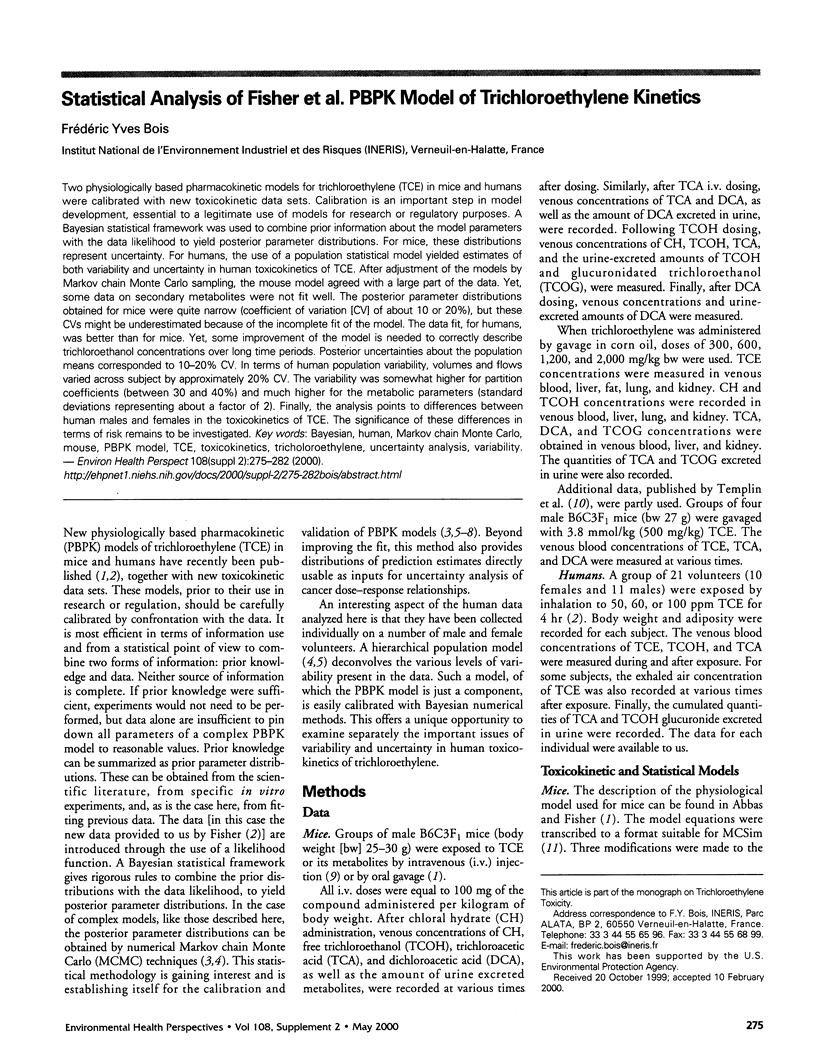
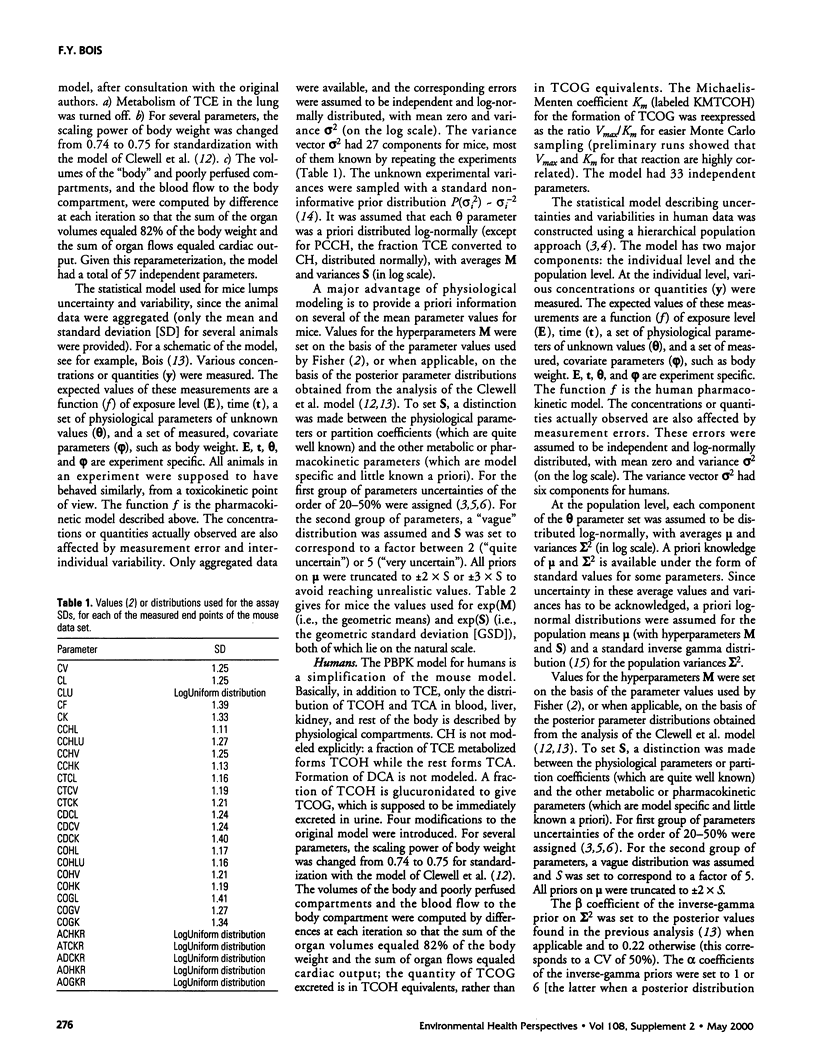
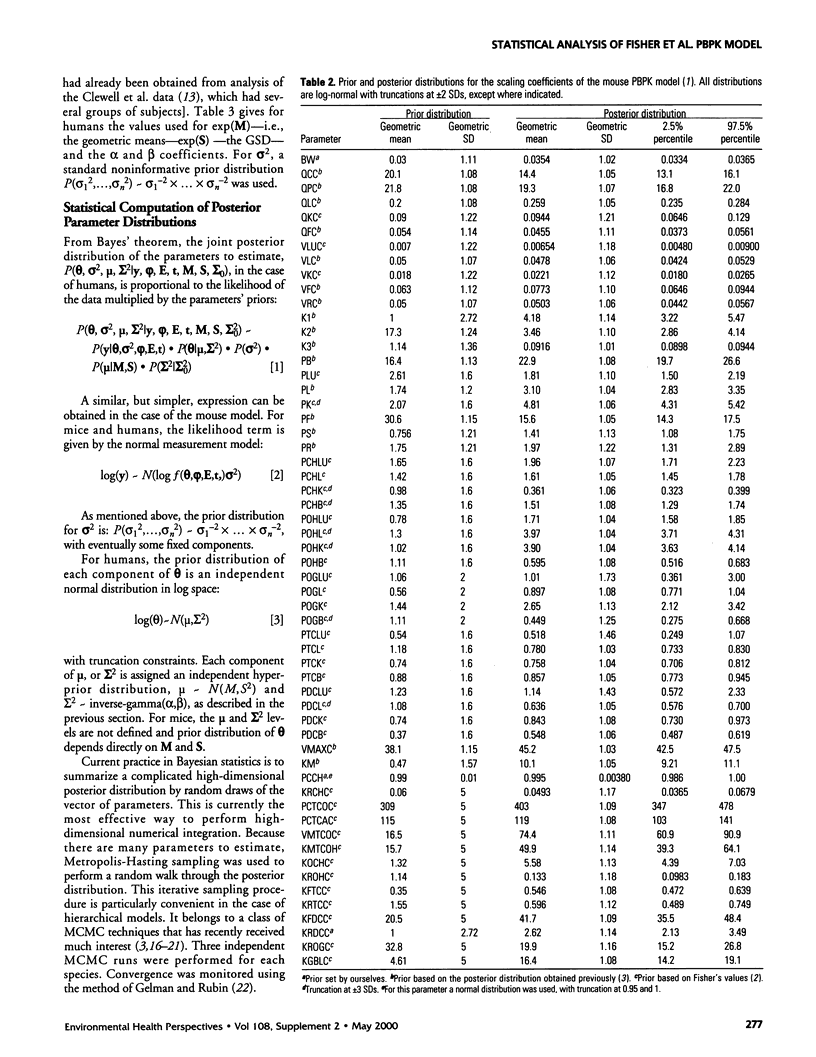
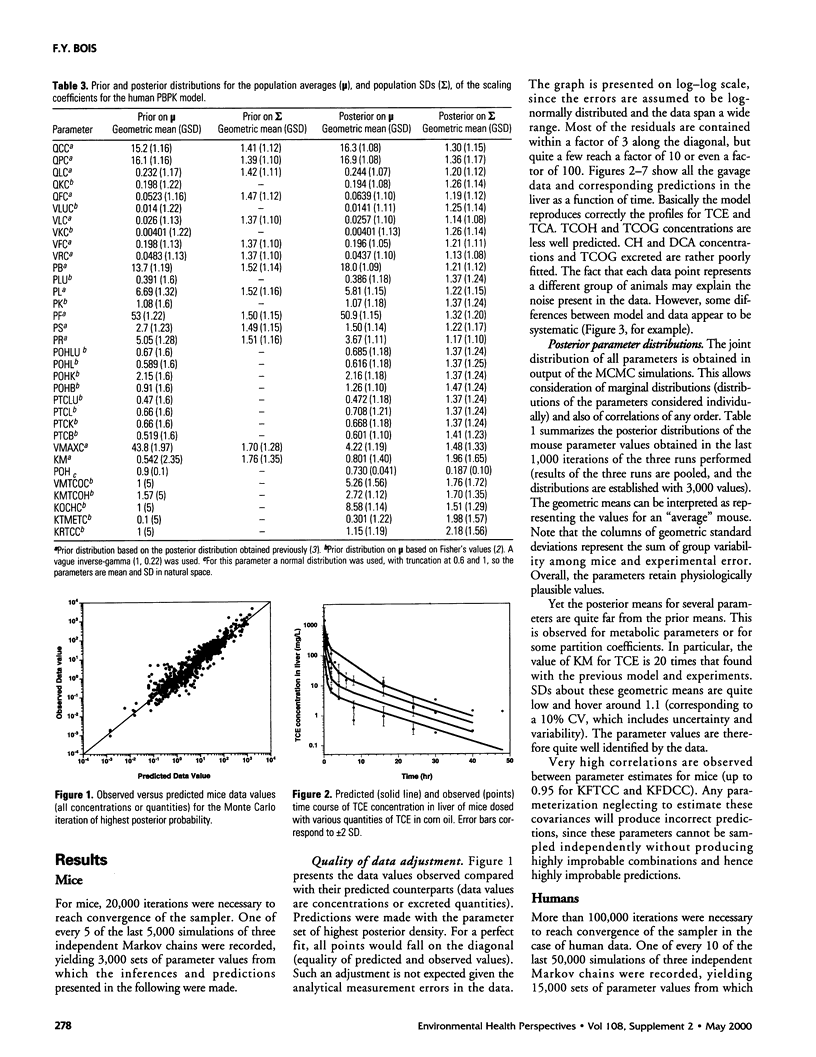
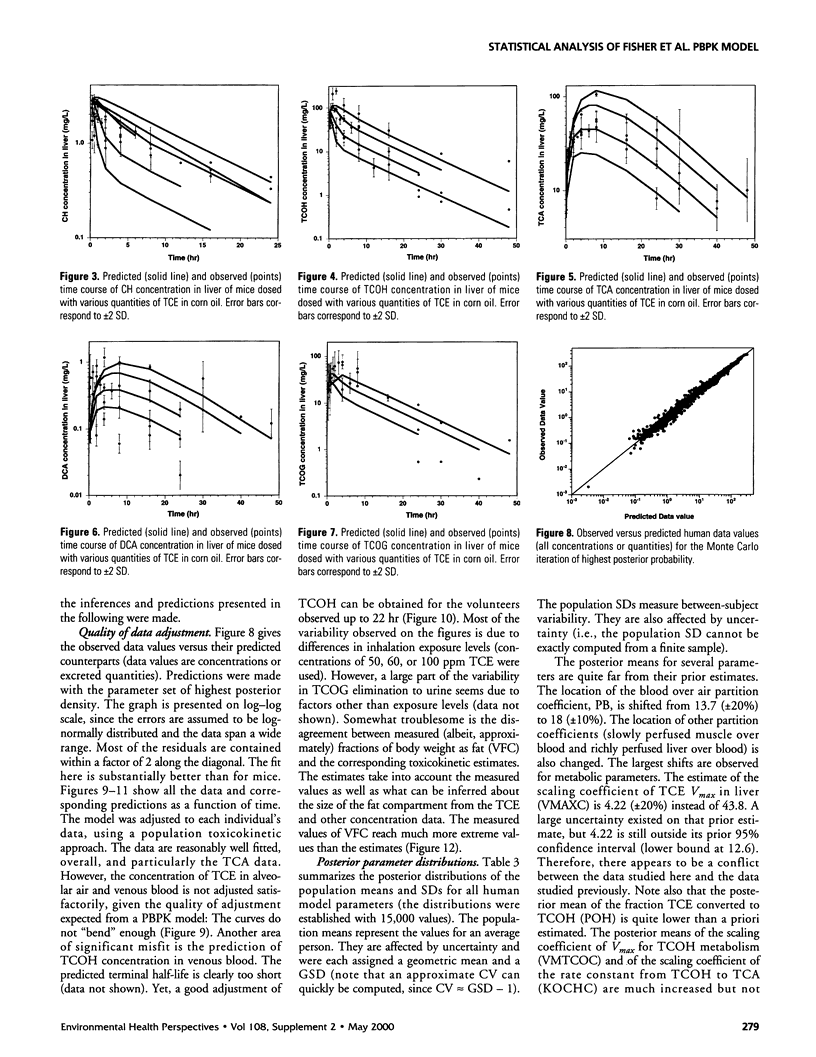
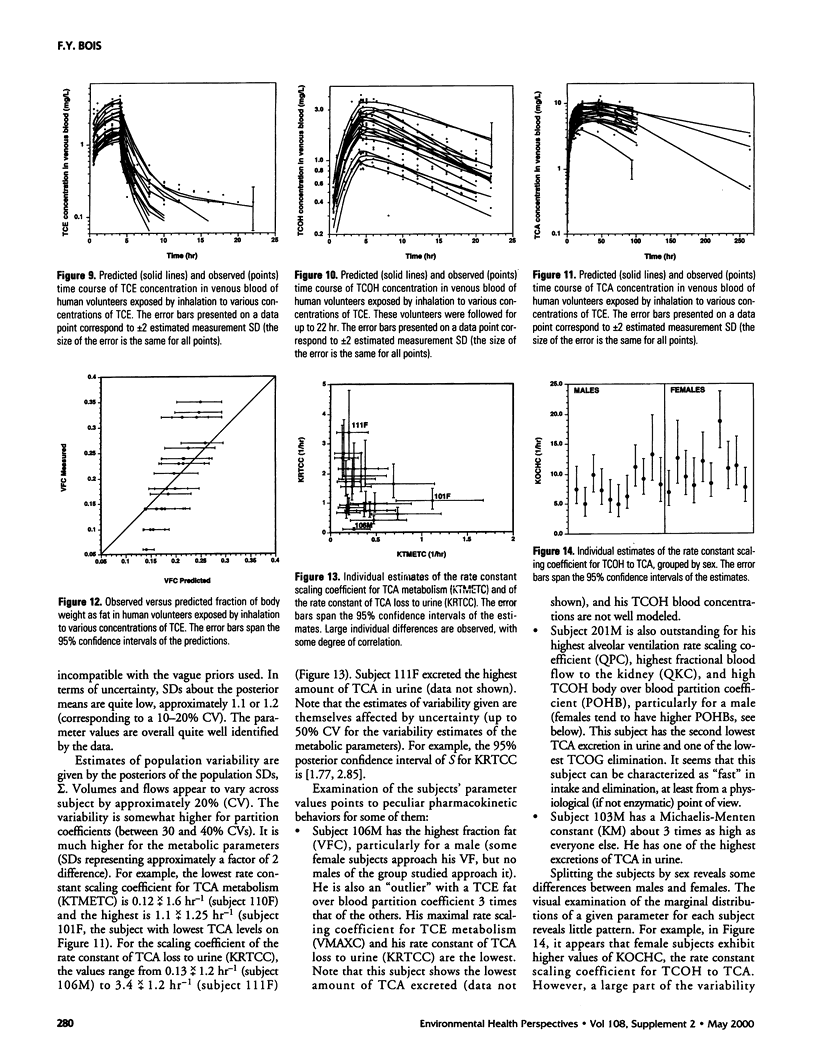
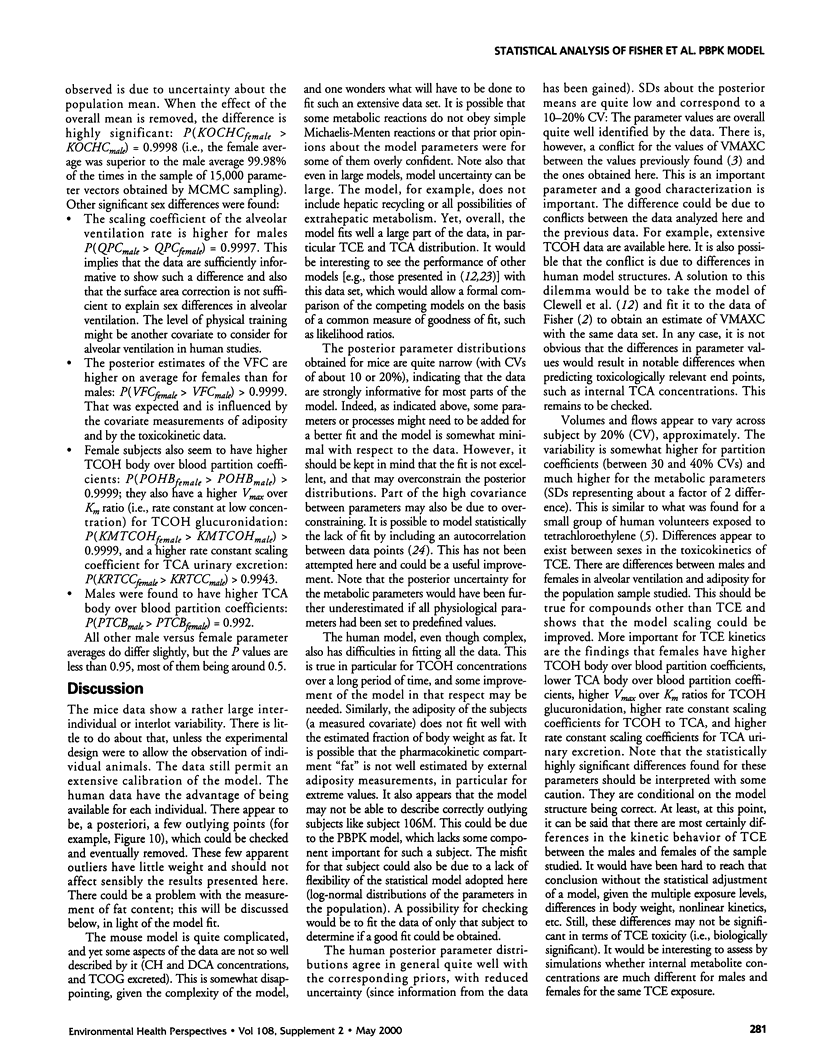
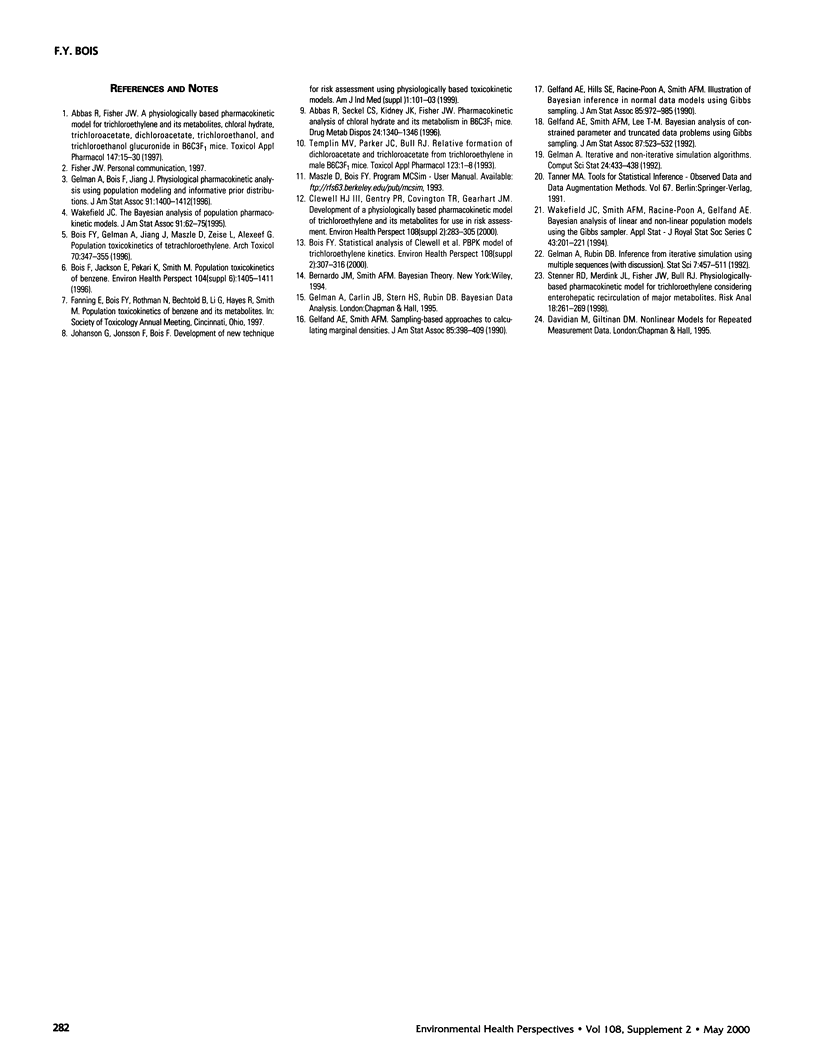
Selected References
These references are in PubMed. This may not be the complete list of references from this article.
- Abbas R. R., Seckel C. S., Kidney J. K., Fisher J. W. Pharmacokinetic analysis of chloral hydrate and its metabolism in B6C3F1 mice. Drug Metab Dispos. 1996 Dec;24(12):1340–1346. [PubMed] [Google Scholar]
- Abbas R., Fisher J. W. A physiologically based pharmacokinetic model for trichloroethylene and its metabolites, chloral hydrate, trichloroacetate, dichloroacetate, trichloroethanol, and trichloroethanol glucuronide in B6C3F1 mice. Toxicol Appl Pharmacol. 1997 Nov;147(1):15–30. doi: 10.1006/taap.1997.8190. [DOI] [PubMed] [Google Scholar]
- Bois F. Y., Gelman A., Jiang J., Maszle D. R., Zeise L., Alexeef G. Population toxicokinetics of tetrachloroethylene. Arch Toxicol. 1996;70(6):347–355. doi: 10.1007/s002040050284. [DOI] [PubMed] [Google Scholar]
- Bois F. Y., Jackson E. T., Pekari K., Smith M. T. Population toxicokinetics of benzene. Environ Health Perspect. 1996 Dec;104 (Suppl 6):1405–1411. doi: 10.1289/ehp.961041405. [DOI] [PMC free article] [PubMed] [Google Scholar]
- Bois F. Y. Statistical analysis of Clewell et al. PBPK model of trichloroethylene kinetics. Environ Health Perspect. 2000 May;108 (Suppl 2):307–316. doi: 10.1289/ehp.00108s2307. [DOI] [PMC free article] [PubMed] [Google Scholar]
- Clewell H. J., 3rd, Gentry P. R., Covington T. R., Gearhart J. M. Development of a physiologically based pharmacokinetic model of trichloroethylene and its metabolites for use in risk assessment. Environ Health Perspect. 2000 May;108 (Suppl 2):283–305. doi: 10.1289/ehp.00108s2283. [DOI] [PMC free article] [PubMed] [Google Scholar]
- Johanson G., Jonsson F., Bois F. Development of new technique for risk assessment using physiologically based toxicokinetic models. Am J Ind Med. 1999 Sep;Suppl 1:101–103. doi: 10.1002/(sici)1097-0274(199909)36:1+<101::aid-ajim36>3.0.co;2-i. [DOI] [PubMed] [Google Scholar]
- Stenner R. D., Merdink J. L., Fisher J. W., Bull R. J. Physiologically-based pharmacokinetic model for trichloroethylene considering enterohepatic recirculation of major metabolites. Risk Anal. 1998 Jun;18(3):261–269. doi: 10.1111/j.1539-6924.1998.tb01293.x. [DOI] [PubMed] [Google Scholar]
- Templin M. V., Parker J. C., Bull R. J. Relative formation of dichloroacetate and trichloroacetate from trichloroethylene in male B6C3F1 mice. Toxicol Appl Pharmacol. 1993 Nov;123(1):1–8. doi: 10.1006/taap.1993.1214. [DOI] [PubMed] [Google Scholar]


